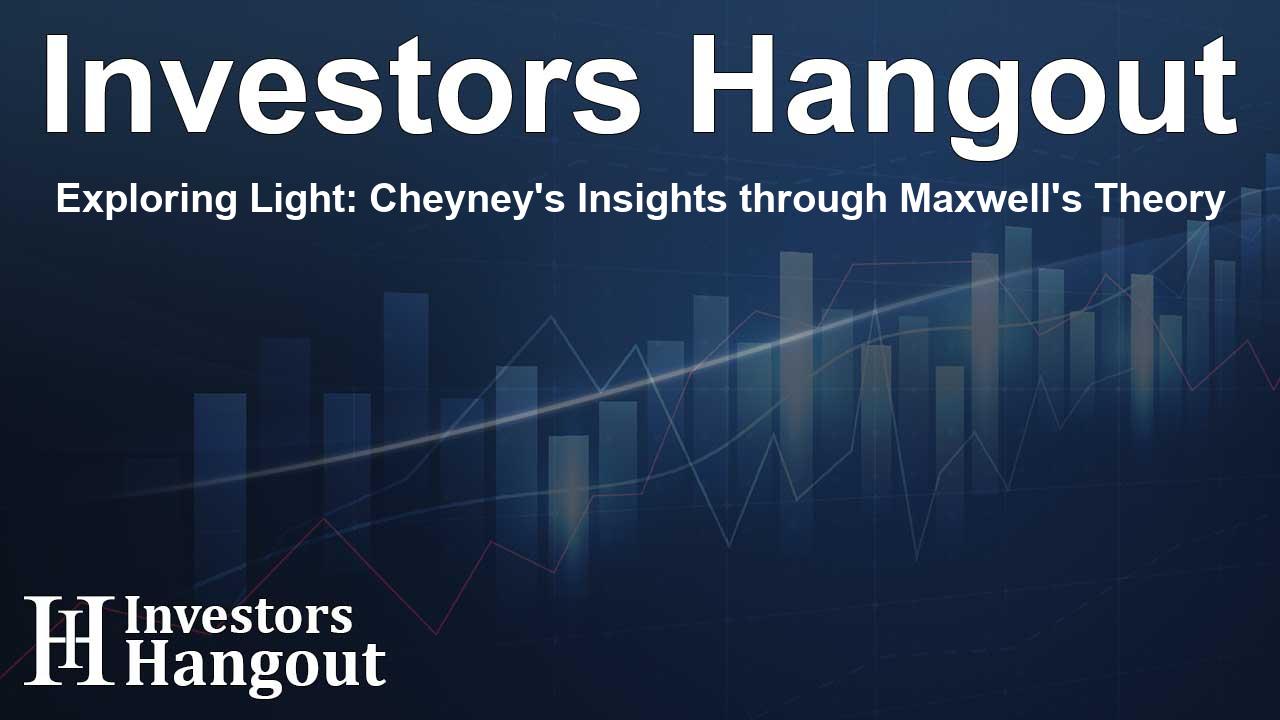Exploring Light: Cheyney's Insights through Maxwell's Theory

Understanding the New Perspective on Light
Recent research backed by Cheyney Design and Development, specialists in X-ray inspection technologies, has uncovered a groundbreaking perspective on the nature of light. This research, spearheaded by Dr. Dhiraj Sinha from Plaksha University, proposes that the origins of Einstein's photon theory are deeply rooted in Maxwell's electromagnetic fields. This revelation challenges a century-old belief about the relationship between photons and electromagnetic theory laid down by the revered physicist James Clerk Maxwell.
The Historical Context of Light Theories
The nature of light has long fascinated scientists, behaving both as a wave in free space and as a particle when it interacts with matter. Maxwell's work on light as an electromagnetic wave in 1865 gained empirical support from Heinrich Hertz in 1887. However, this purview of light shifted dramatically in the early 20th century. In 1905, Albert Einstein's exploration of the photoelectric effect led to the breakthrough idea that light consists of particles or photons, each carrying energy proportional to its frequency. This marked a pivotal turn in the way light was perceived within the scientific community, giving rise to the dual nature of light which remains foundational today.
Revolutionizing Understanding Through Research
In Dr. Sinha's innovative work, he endeavors to bridge the historical gap by revisiting Maxwell's electromagnetic theory. He presents compelling evidence that this theory is capable of explaining how light interacts with electrons. This latest article emphasizes the importance of the time-varying magnetic field of light, asserting it generates an electric potential in space. Sinha posits that electrons gain energy from this electric potential, mathematically illustrated as dj/dt, where j signifies the magnetic flux of radiation and t denotes time. His calculations lead to an energy transfer expression of W=edj/dt for an electron with charge e, transforming this into frequency domain representation. This is where he aligns the energy of an electron with Einstein's concept of a photon's energy defined as ?w, binding traditional electromagnetism with modern quantum physics.
Support and Implications for Future Technology
Dr. Sinha’s revelations have drawn interest and support from various prominent physicists. Richard Muller from the University of California Berkeley noted the insights provided a fresh perspective on longstanding questions within quantum physics. Meanwhile, Jorge Hirsch from the University of California, San Diego, praised the clarity Sinha brought to complex quantum phenomena. Steven Verrall highlighted this work’s potential to enrich semiclassical models in low-energy physics. Professor Lawrence Horwitz acknowledged it as a significant contribution to understanding photons and electrons.
Beyond theoretical implications, Dr. Sinha's discoveries promise advancements in practical technology. By merging classical electromagnetism with photonics, his work opens doors to integrated devices that could transform areas such as solar technology, lasers, and light-emitting diodes. This potentially lays the groundwork for a new technological era that fuses classical understanding with modern innovation.
The Journey of Discovery
Reflecting on his academic journey, Dr. Sinha remarked, "The work commenced during my doctoral years at the University of Cambridge, where vital early support from Cheyney played a crucial role. It evolved into profound insights during my postdoctoral endeavors at the Massachusetts Institute of Technology. The empirical results obtained from rigorous experiments across a span of radio and optical frequencies led to the realization of the critical link between Einstein’s and Maxwell’s theories.”
About Cheyney Design and Development
Cheyney Design and Development Ltd, based in Litlington, UK, was founded by Richard Parmee and is recognized for its pioneering innovations in X-ray inspection technology. The company stands at the forefront with patented technology and advanced algorithms, committed to fostering transformative scientific advancements in both engineering and research domains.
Frequently Asked Questions
What does the recent research by Cheyney reveal?
It reveals that the quantum nature of light may originate from Maxwell's electromagnetic fields, challenging historical views on photons.
Who led the research on light's nature?
Dr. Dhiraj Sinha from Plaksha University was the leading researcher behind this groundbreaking study.
Why is Maxwell's theory significant in understanding light?
Maxwell's theory provides a foundation to explain the interactions between light and electrons, potentially bridging classical and quantum physics.
How could this research impact technology?
It may lead to innovations in devices that combine principles of electromagnetism with photonic technologies, affecting industries like solar cells and lasers.
What are the implications of this study for physicists?
It offers new perspectives on the particle/wave duality of light and potential advancements in the field of quantum physics.
About The Author
Contact Henry Turner privately here. Or send an email with ATTN: Henry Turner as the subject to contact@investorshangout.com.
About Investors Hangout
Investors Hangout is a leading online stock forum for financial discussion and learning, offering a wide range of free tools and resources. It draws in traders of all levels, who exchange market knowledge, investigate trading tactics, and keep an eye on industry developments in real time. Featuring financial articles, stock message boards, quotes, charts, company profiles, and live news updates. Through cooperative learning and a wealth of informational resources, it helps users from novices creating their first portfolios to experts honing their techniques. Join Investors Hangout today: https://investorshangout.com/
The content of this article is based on factual, publicly available information and does not represent legal, financial, or investment advice. Investors Hangout does not offer financial advice, and the author is not a licensed financial advisor. Consult a qualified advisor before making any financial or investment decisions based on this article. This article should not be considered advice to purchase, sell, or hold any securities or other investments. If any of the material provided here is inaccurate, please contact us for corrections.
